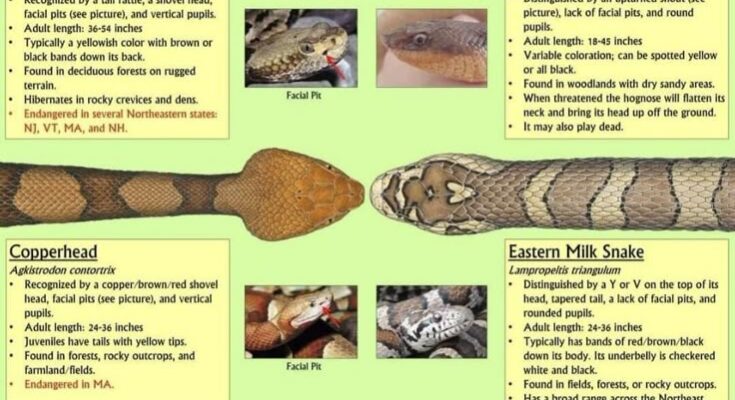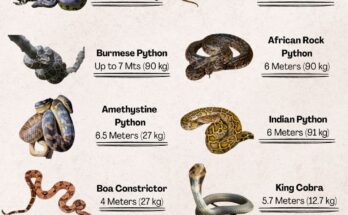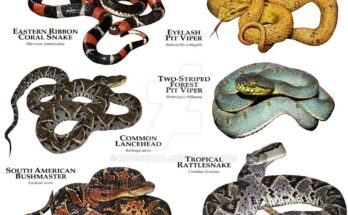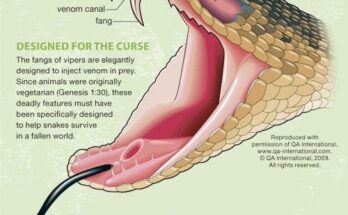Cases of Mistaken Identity: A Guide to Northeastern Venomous and Non-Venomous Snakes
Navigating the wilderness of the Northeastern United States can sometimes lead to confusion when encountering snakes, especially when distinguishing between venomous and non-venomous species. This comprehensive guide highlights four commonly confused pairs of snakes found in states like New Jersey, Massachusetts, New Hampshire, and beyond. Based on the detailed chart provided, we delve into the characteristics, habitats, and behaviors of the Timber Rattlesnake, Copperhead, Cottonmouth, Eastern Hognose, Eastern Milk Snake, and Northern Water Snake, helping you identify them with confidence and safety in mind.

Venomous Snakes
Timber Rattlesnake (Crotalus horridus)
The Timber Rattlesnake is a formidable presence in the rocky crevices and dens of Northeastern forests. Recognizable by its broad, triangular head, facial pits (heat-sensing organs), and vertical pupils, this venomous snake ranges from 36 to 54 inches in length. Its coloration is a striking yellowish hue with brown or black bands that resemble a leaf pattern, aiding its camouflage among rugged backdrops. Found in rocky terrains across NJ, VT, MA, and NH, this species is known for its distinctive rattle, a warning signal of its potent venom. Caution is advised when exploring its habitat.
Copperhead (Agkistrodon contortrix)
The Copperhead, another venomous species, is identified by its coppery brown-to-red shovel-shaped head, facial pits, and vertical pupils. Adults typically measure 24 to 36 inches, with juveniles displaying yellow tail tips—a feature that fades with age. This snake thrives in forested areas, rocky outcrops, and farmland fields, blending seamlessly with leaf litter. Notably endangered in Massachusetts, the Copperhead’s banded pattern and heat-sensing pits make it a master of disguise, requiring careful observation to avoid accidental encounters.
Cottonmouth (Agkistrodon piscivorus)
Often mistaken for its non-venomous counterparts, the Cottonmouth stands out with its black “hourglass” bands on a lighter, flattened head, facial pits, and vertical pupils. Ranging from 30 to 48 inches, this semi-aquatic snake exposes a white mouth when threatened—a clear warning sign. Preferring habitats near freshwater, its range extends further north than Virginia, making it a rare but notable presence in the Northeast. Its proximity to water sources heightens the need for awareness.
Non-Venomous Snakes
Eastern Hognose (Heterodon platirhinos)
The Eastern Hognose is a fascinating non-venomous snake, distinguished by its upturned snout (see picture), lack of facial pits, and round pupils. Adults grow to 18-45 inches, displaying variable coloration that can be spotted yellow, all black, or patterned with dry sandy areas in mind. When threatened, it flattens its head and may play dead, adding to its dramatic flair. Commonly found in sandy soils across the Northeast, this species is harmless but often misunderstood due to its defensive display.
Eastern Milk Snake (Lampropeltis triangulum)
The Eastern Milk Snake, with its Y or V on the top of its head, tapered tail, lack of facial pits, and round pupils, is a striking non-venomous species. Typically 24-36 inches long, it features bands of red, brown, black, and white, with a checkered underbelly. This nocturnal snake inhabits forests, rocky outcrops, and broad range areas across the Northeast, feeding on small rodents. Its colorful pattern often leads to confusion with venomous species, but it poses no threat.
Northern Water Snake (Nerodia sipedon)
The Northern Water Snake is recognized by dark bands down its body, a broad head, a slender body, lack of facial pits, and round pupils. Ranging from 24-42 inches, its coloration can be brown, reddish, gray, or black. A frequent sight near freshwater, this snake thrives across a broad Northeastern range. Despite its aggressive defense when cornered, it is harmless to humans and plays a vital role in controlling aquatic pest populations.
Understanding the Differences
This guide underscores the importance of identifying key features such as head shape, pupil type, and the presence of facial pits to differentiate venomous from non-venomous snakes. Venomous species like the Timber Rattlesnake, Copperhead, and Cottonmouth rely on heat-sensing pits and vertical pupils, while non-venomous snakes like the Eastern Hognose, Eastern Milk Snake, and Northern Water Snake lack these traits. Habitat preferences also offer clues—venomous snakes favor rocky or forested areas, while non-venomous species often adapt to a wider range, including water edges.
Safety and Appreciation
Encountering these snakes in the wild can be an exciting experience if approached with respect and caution. Always maintain a safe distance, especially with venomous species, and avoid handling any snake unless you are a trained professional. The chart above serves as a valuable tool for hikers, naturalists, and curious explorers to appreciate Michigan’s diverse snake population while staying informed. For further details or local sightings, consult wildlife experts or regional resources to enhance your outdoor adventures safely.
Note: Always prioritize safety and refer to local guidelines when exploring snake habitats.



